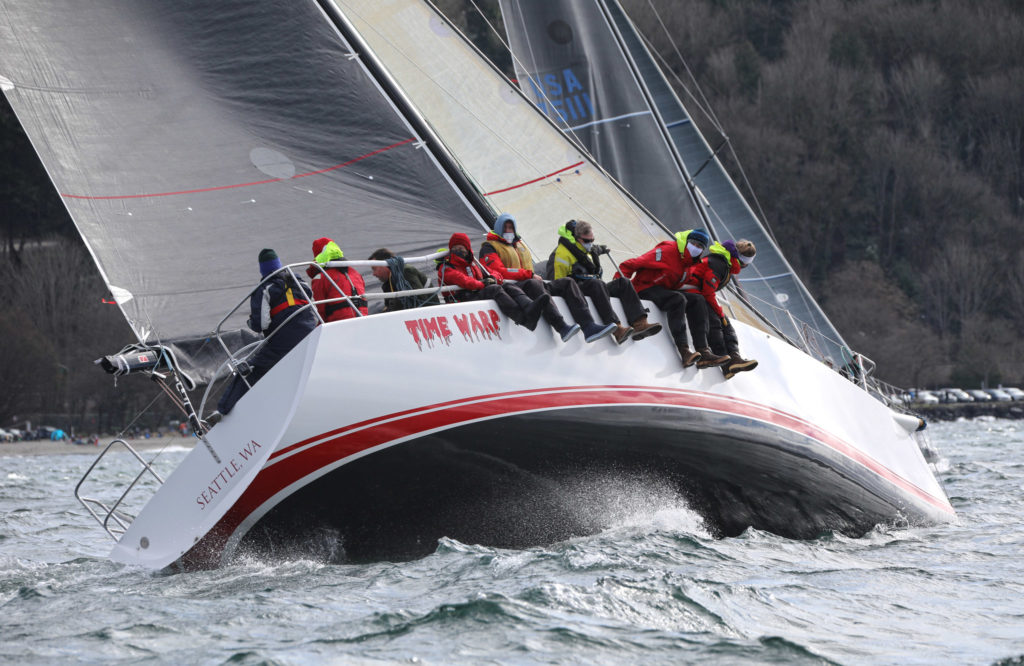
It has been a particularly rough winter, and it goes without saying that boating is not at the top of most people’s lists while there is a foot of ice covering every surface in the city. But as they say, the night is darkest before the dawn, and before we know it, winter will end. While most visits to our boats this time of year are centered around checking dock lines and making sure the water is staying on the outside, it is also a great time to dig into some projects that often get overlooked during a normal race weekend.
The importance of getting ahead of potential failures is ironically compounded by the fact that summer winds are predominantly light in Puget Sound, which forces race organizers to the shoulder seasons to increase the chances of having good wind for an event. As a result, the spring sailing season begins in March with Corinthian Yacht Club’s Center Sound Series and carries on with a different event nearly every weekend until things wraps up with the Seattle Yacht Club Tri Island Series in June. Even though we call them spring races, they are still deep within the winter storm cycles that roll through the Pacific Northwest, and when the systems line up with race dates, the potential for windy weekends is high. More than once in the past few years we found ourselves heading to the start line in less than friendly conditions.
With nearly an entire year’s worth of regattas packed into three months, it is easy for things to turn into a bit of a scramble as small breakages and minor repairs stack up week after week. As with most things, an ounce of preparation is worth a pound of reaction, and a handful of simple checks can go a long way in keeping your boat racing—instead of at the dock under repair. The biggest problems often give you hints before they go bad, and some simple quick checks can save a sailing team from missing a weekend regatta with breakdown or much worse. The most common failures we have seen over the past few years would have been simple to fix, but were difficult to find, and those are the things that are worth digging deeper to check.
While sheets and control lines are easy enough to inspect every day of sailing, we often see halyards go years without receiving much love as they are up the mast. Often, once out of sight, then out of mind. The best way to give them a solid inspection is to pull them out of the mast and run your hands along the entire length of the line. You can use a small mouse line tied to the tail end of the halyard and pull them out of the mast. The important thing to check is chafe along the sections of line that are inside the mast and rarely see the light of day. In particular, the main halyard is often overlooked as its only goes up and down once most sailing days and spends the rest of its life swaying in the breeze as it holds up the boom. Taking time to inspect the halyard where it exits the mast when attached to the boom could save a lot of heartache down the road. Mousing out and repairing a damaged halyard beats trying to drop a weight and fish a new one out of the mast after it breaks and the sail ends up in the water.
Beyond the running rigging, the next things to look over are the static rigging, shrouds stays, and lifelines. On most racing boats, we often see a lot of rigging wrapped up in tape to protect sails from sharp edges, this is important to not tear sails but can hide potential issues if not checked. Spreader tips, shroud bases, and lifeline terminals can easily be entombed in many layers of tape which can entrap water that leads to corrosion over time. While some tape is good, cutting it off every year, giving everything a good clean, and rewrapping for the season can alert you to issues before they become major problems. Specifically with lifelines, if they are attached with clevis pins, make sure to check that the split pins or rings are properly installed. If they are attached with lashings, take the time to untie the lashing, and check the lashing line itself for chafe.
Leading up to the start of the racing season or major regatta, it’s important to go out of your way to check the stuff you can’t see because it is normally what jumps out to bite you. If there are ever questionable findings, or something just doesn’t seem right, always reach out to a credible rigging company for advice and support. We are all looking forward to an exciting and safe spring racing season, and with a little bit of preventative maintenance, the odds increase exponentially for a successful one.


